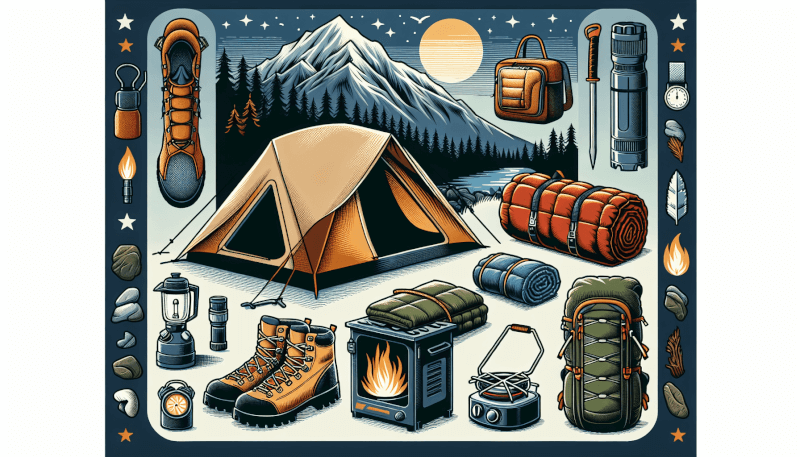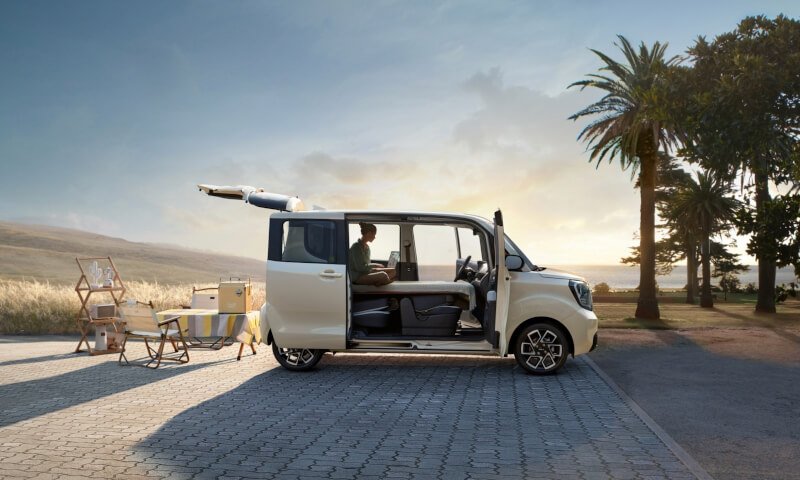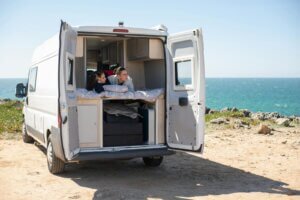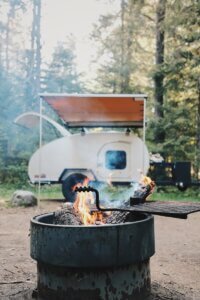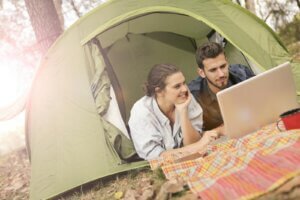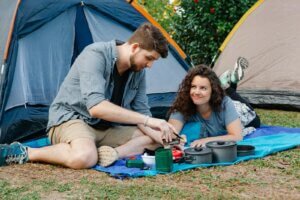Whether you’re planning your first camping adventure or just looking to upgrade your camping gear, having the right essentials is key to a successful experience in the great outdoors. In this article, we’ll guide you through the essential gear that every beginner camper should have. From a sturdy tent and a comfortable sleeping bag to a reliable camping stove and a versatile flashlight, we’ve got you covered with all the must-haves for a memorable camping trip. So pack your bags, put on your hiking boots, and let’s get started on your journey to becoming a camping pro!
Tent
Size and capacity
When choosing a tent, consider the size and capacity that will suit your needs. If you are camping alone or with a partner, a two-person tent should be sufficient. However, if you plan on camping with a larger group or if you prefer more space, opt for a tent with a higher capacity. Keep in mind that the size and capacity of a tent can directly affect its weight and portability, so choose wisely based on your specific camping requirements.
Durability and weather resistance
Durability and weather resistance are important factors to consider when selecting a tent. Look for a tent made with high-quality materials that can withstand various weather conditions. Ensure that the tent is constructed with sturdy poles and reinforced seams to withstand strong winds and heavy rain. Additionally, check if the tent has a rainfly, which is a protective covering that adds an extra layer of waterproofing. Investing in a durable and weather-resistant tent will ensure your camping experience remains comfortable and safe, regardless of the weather conditions.
Ease of setup
For beginner campers, ease of setup is crucial. Look for a tent that is quick and easy to set up, as this will save you time and frustration during your camping trip. Consider tents with color-coded poles and clear instructions to help simplify the setup process. Additionally, freestanding tents are convenient as they do not require stakes for stability, allowing you to easily move and adjust the tent if needed. Prioritize tents that offer a hassle-free setup to make your camping experience enjoyable and stress-free.
Sleeping bag
Temperature rating
When choosing a sleeping bag, consider the temperature rating to ensure optimal comfort and warmth during your camping trip. Temperature ratings indicate the lowest temperature at which the bag will keep you warm. For example, a sleeping bag with a temperature rating of 20 degrees Fahrenheit is suitable for camping in colder conditions, while a bag with a rating of 50 degrees Fahrenheit is ideal for warmer climates. It is essential to select a sleeping bag with an appropriate temperature rating to avoid discomfort or hypothermia during chilly nights.
Insulation type
Insulation type plays a crucial role in determining the warmth and weight of a sleeping bag. There are two primary insulation types: down and synthetic. Down insulation, typically made from goose or duck feathers, offers excellent warmth-to-weight ratio and compressibility. However, it can lose its insulating properties when wet. On the other hand, synthetic insulation, usually made of polyester fibers, provides better insulation when wet and is easier to maintain. Consider your camping needs and expected weather conditions when choosing between down and synthetic insulation.
Size and weight
The size and weight of a sleeping bag are essential considerations, especially if you plan on backpacking or hiking to your camping destination. Look for a sleeping bag that is lightweight and easily compressible, making it more manageable to carry in your backpack. Additionally, consider the size of the sleeping bag, as it should provide enough space for you to move comfortably while sleeping. However, keep in mind that a larger sleeping bag may also weigh more and occupy more space in your pack. Strike a balance between size and weight to ensure both comfort and portability.
Sleeping pad
Comfort and insulation
A sleeping pad is a crucial element for a good night’s sleep while camping. It provides cushioning and insulation between you and the ground, ensuring comfort and warmth. Look for a sleeping pad that offers ample padding to cushion your body from rocks and uneven surfaces. Additionally, consider the insulation properties of the pad to prevent heat loss to the ground. Sleeping pads with insulation layers or reflective materials can help retain body heat, keeping you warm throughout the night.
Size and weight
Similar to a sleeping bag, the size and weight of a sleeping pad are important factors to consider, especially if you plan on backpacking. Look for a sleeping pad that is lightweight and easy to pack, as it will add minimal weight to your backpack. Additionally, consider the packed size of the sleeping pad to ensure it fits comfortably within your backpack. However, be cautious not to compromise on comfort and insulation for the sake of reducing weight and size. Finding a balance between size, weight, and comfort will ensure a cozy night’s sleep.
Inflation and deflation
The ease of inflation and deflation of a sleeping pad is another important aspect to consider. Look for a sleeping pad that can be inflated and deflated quickly and easily. Many sleeping pads come with built-in or included inflation devices, such as hand pumps or integrated air valves. These features make the inflation and deflation process convenient, saving you time and effort. Additionally, consider the valve type, as valves that prevent air leakage and allow for quick deflation can enhance the overall usability of the sleeping pad.
Backpack
Capacity and organization
When selecting a backpack, consider its capacity and organization features. The capacity of a backpack determines how much gear you can carry. As a beginner camper, opt for a backpack with a sufficient capacity to accommodate your belongings without being overly bulky or heavy. Additionally, look for backpacks with multiple compartments and pockets to help you stay organized during your camping trip. Compartments can be used to separate items such as clothes, cooking equipment, and personal items for easy access and convenience.
Comfort and fit
Comfort and fit are crucial when choosing a backpack, as it will be carrying the weight of your gear for prolonged periods. Look for backpacks with padded shoulder straps and a supportive back panel to distribute the weight evenly and reduce strain on your shoulders and back. Additionally, consider backpacks with adjustable straps and hip belts, as these features allow for a customized fit that suits your body shape and size. Trying on different backpacks and adjusting the straps accordingly will help you find a comfortable and well-fitting backpack.
Durability
Durability is an important factor to consider when investing in a backpack. Look for backpacks made with high-quality materials, such as reinforced nylon or polyester, that can withstand rough handling and outdoor elements. Pay attention to the construction of the backpack, including strong stitching and robust zippers, as these contribute to its durability. Investing in a durable backpack will ensure it lasts for multiple camping trips, saving you money in the long run.
Cooking equipment
Stove and fuel
When it comes to cooking equipment, a reliable stove and fuel source are essential for outdoor cooking. Look for a camping stove that is lightweight and portable, enabling easy transportation. Consider the fuel source required for the stove, whether it be a canister fuel or liquid fuel, and choose one that suits your preferences and availability. Additionally, ensure the stove has a reliable ignition system for hassle-free cooking. Prioritize stoves that offer adjustable flame control to cater to different cooking needs.
Cookware and utensils
Selecting the appropriate cookware and utensils is vital for preparing meals while camping. Look for cookware made from lightweight and durable materials, such as stainless steel or aluminum, that can withstand outdoor conditions. Consider a cookware set that includes various pot sizes and a frying pan to accommodate different recipes. Additionally, pack essential utensils such as a spatula, a cooking spoon, and a knife for food preparation. Opt for lightweight and compact utensils to minimize the overall weight of your camping gear.
Food storage and preparation
Proper food storage and preparation equipment are necessary to ensure the safety and hygiene of your meals while camping. Invest in high-quality food storage containers that are airtight and leak-proof to keep your food fresh and prevent contamination. Consider collapsible or nesting containers to save space in your backpack. Additionally, pack essential food preparation tools such as a cutting board and a portable camping stove. Prioritize equipment that is easy to clean and maintain, ensuring a hassle-free cooking experience.
Water filtration system
Filter type and effectiveness
A reliable water filtration system is crucial for ensuring safe drinking water while camping. Look for water filters that are capable of removing bacteria, protozoa, and other harmful contaminants from natural water sources. Several types of filters are available, ranging from pump filters to gravity filters and squeeze filters. Each type has its advantages and disadvantages, so consider your camping needs and preferences when selecting a water filtration system. Additionally, check the filter’s effectiveness by reviewing customer reviews and ratings, ensuring it meets your safety requirements.
Ease of use and maintenance
The ease of use and maintenance of a water filtration system is essential for a hassle-free camping experience. Look for filters that are simple to operate, with clear instructions provided. Consider filters that do not require any additional chemicals, batteries, or excessive pumping to ensure convenience. Additionally, check the maintenance requirements of the filter, such as cleaning and replacing filter cartridges. Prioritize filters with a long lifespan and easily replaceable cartridges to minimize ongoing maintenance efforts.
Weight and portability
Weight and portability are important considerations when selecting a water filtration system, especially for backpacking. Look for lightweight and compact filters that can be easily packed and carried in your backpack. Consider collapsible water containers as they take up minimal space once empty. Additionally, opt for filters that have integrated features, such as collapsible water pouches or hydration pack compatibility, to enhance the overall portability and convenience of the system.
Headlamp
Brightness and beam distance
A reliable headlamp is essential for illuminating your surroundings during nighttime activities or emergencies. Look for headlamps with adjustable brightness settings to cater to different lighting needs. Consider the maximum beam distance of the headlamp, as it determines how far the light can reach. Opt for headlamps with a reasonable beam distance to provide sufficient visibility. Additionally, check for headlamps with different light modes, such as white light and red light, to suit various situations and preserve battery life.
Battery life
Battery life is a crucial factor to consider when choosing a headlamp. Look for headlamps with a long battery life that can last throughout your camping trip without requiring frequent replacements or recharge. Consider headlamps that use rechargeable batteries, as they can be convenient and cost-effective. Additionally, check the battery type required for the headlamp and ensure it is readily available for replacements when needed. Prioritize reliable headlamps that offer extended battery life for uninterrupted illumination.
Comfort and adjustability
Comfort and adjustability are important aspects to consider, as you’ll be wearing the headlamp for extended periods. Look for headlamps with adjustable straps that allow for a customized and secure fit on your head. Consider headlamps with cushioned and breathable headbands to enhance comfort during prolonged use. Additionally, check for headlamps that are lightweight and ergonomically designed to prevent discomfort or strain. Trying on different headlamp models and adjusting the straps will help you find a comfortable and well-fitting option.
First aid kit
Essential medical supplies
A well-stocked first aid kit is an essential part of any camping gear. Look for a first aid kit that includes a variety of medical supplies to address common camping injuries and illnesses. Essential items to include are adhesive bandages, gauze pads, adhesive tape, antiseptic wipes, tweezers, scissors, pain relievers, and blister treatment. Consider any personal medications or additional supplies you may require and ensure they are included in the kit. Prioritize first aid kits that come with a comprehensive selection of medical supplies for various emergency situations.
Emergency contact information
Including emergency contact information in your first aid kit is crucial for quick access during emergencies. Write down emergency phone numbers for local authorities, park rangers, medical services, and any relevant personal contacts. Additionally, consider including a list of allergies, medical conditions, and medications for yourself and your camping companions. Providing this information can be critical in emergency situations where immediate medical attention is required. Ensure the emergency contact information is easily accessible within the first aid kit.
Knowledge on basic first aid procedures
Having basic knowledge of first aid procedures is essential for effectively using the items in your first aid kit during emergencies. Consider taking a basic first aid course or familiarizing yourself with common first aid techniques, such as CPR, wound care, and splinting. Understanding how to properly use the items in your first aid kit will help you provide immediate assistance until professional help arrives. Prioritize enhancing your knowledge on basic first aid procedures for a safe and prepared camping experience.

Navigation tools
Compass and map
Navigation tools are crucial for ensuring you stay on track and reach your desired camping destinations. A compass and map are essential tools for navigation in outdoor environments. Look for a reliable compass that is easy to use and provides accurate readings. Additionally, ensure you have a detailed topographic map of the camping area or trails you plan to explore. Familiarize yourself with how to use the compass and map together to determine your direction and location. Prioritize navigation tools that are durable and provide accurate information for effective navigation.
GPS device or smartphone app
In addition to a compass and map, a GPS device or smartphone app can be valuable tools for navigation. Look for a GPS device that is reliable and provides accurate location tracking. Consider devices that have preloaded maps or the ability to download maps for offline use. Alternatively, smartphone apps with GPS capabilities can also serve as navigation tools. However, ensure you have a backup power source or portable charger to keep your device powered throughout your camping trip. Utilizing GPS devices or smartphone apps can provide additional navigation assistance and route planning capabilities.
Navigation skills
Having navigation skills is crucial for effectively using navigation tools and staying on track during outdoor activities. Familiarize yourself with basic navigation techniques, such as orienting a map, interpreting grid references, and using different types of navigation markers. Consider taking a navigation course or practicing navigation skills in familiar outdoor areas before embarking on more challenging camping trips. Prioritize enhancing your navigation skills to ensure a safe and enjoyable camping experience with minimal navigation errors.
Clothing and footwear
Layering system
The layering system is essential for regulating body temperature and providing comfort in various weather conditions. When camping, consider using the layering system, which consists of a base layer, an insulation layer, and an outer shell layer. Look for base layers made of moisture-wicking materials to keep you dry by effectively pulling sweat away from your skin. Insulation layers, such as fleece or down jackets, provide warmth by trapping body heat. Lastly, outer shell layers, such as waterproof or windproof jackets, protect you from external elements. Prioritize clothing that allows for easy layering to adapt to changing weather conditions.
Moisture-wicking and quick-drying fabrics
Choosing clothing made from moisture-wicking and quick-drying fabrics is essential for maintaining comfort during camping trips. Look for clothing made of synthetic fibers or merino wool, as these materials effectively wick away moisture from your skin. Moisture-wicking fabrics prevent sweat from accumulating, keeping you dry and preventing discomfort during physical activities. Additionally, prioritize clothing that dries quickly to prevent prolonged dampness, which can lead to discomfort and potentially hypothermia in colder conditions.
Appropriate footwear
Having appropriate footwear is crucial for a comfortable and safe camping experience. Look for hiking boots or shoes that provide good ankle support, traction, and durability. Consider the terrain and weather conditions of your camping destination when selecting footwear. Waterproof or water-resistant footwear is recommended for wet or muddy conditions, while breathable and lightweight footwear is suitable for warmer climates. Ensure your footwear is comfortable and properly broken-in before embarking on your camping trip to avoid blisters and foot discomfort. Prioritize investing in high-quality and suitable footwear for the best camping experience.
